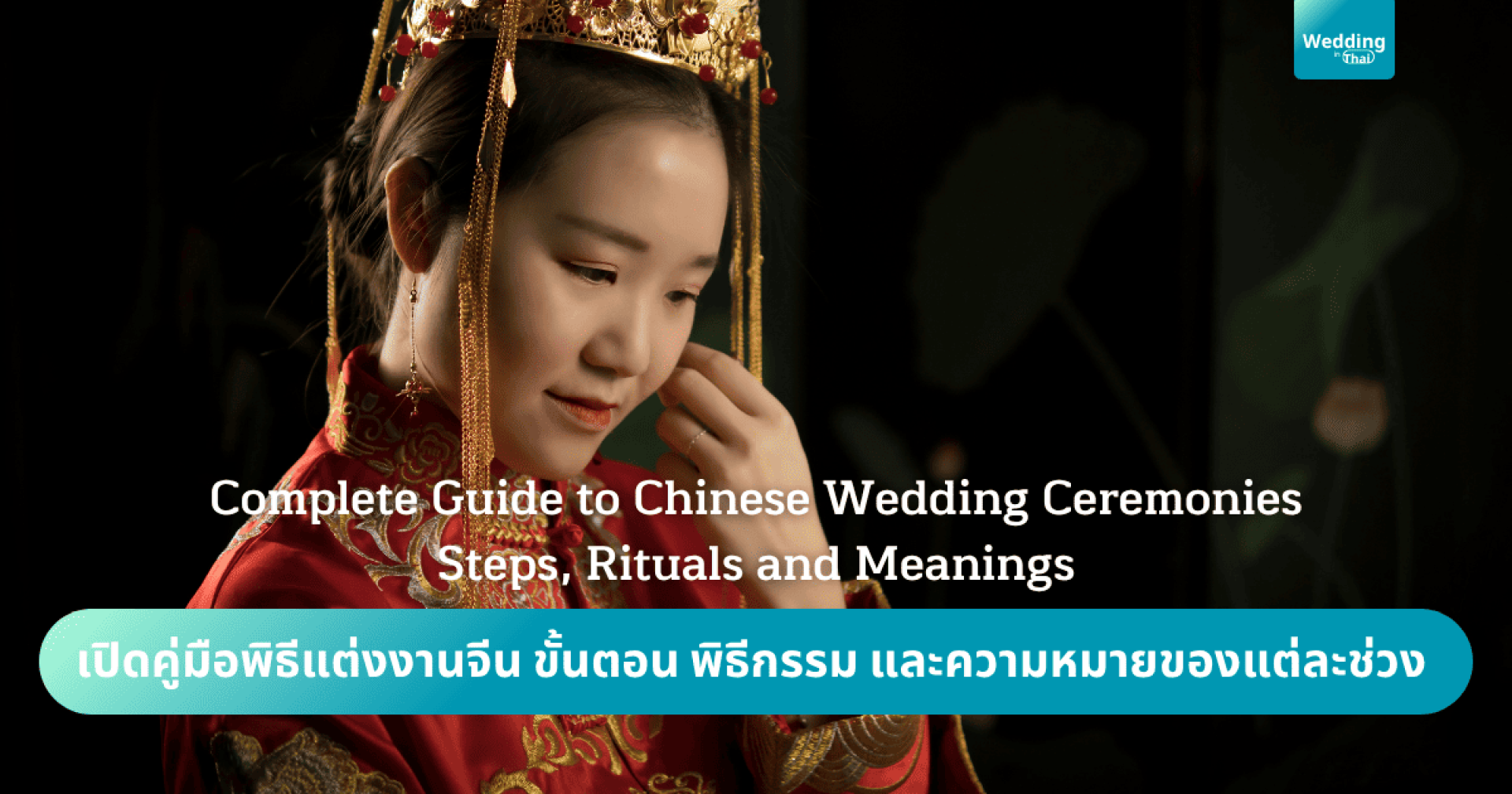Complete Guide to Chinese Wedding Ceremonies Steps, Rituals and Meanings
Last updated: 5 Nov 2025
445 Views

Complete Guide to Chinese Wedding Ceremonies Steps, Rituals and Meanings
Chinese wedding ceremonies are rich in tradition and symbolism. From the betrothal gifts (Guo Da Li) to the tea ceremony and the wedding banquet, each stage carries cultural meaning and customary practices. Understanding these rituals helps couples plan a meaningful event, respect family expectations, and preserve cultural heritage.
Overview of Main Steps
• Betrothal & Gift Exchange (Guo Da Li)
• Choosing an auspicious date
• Hair-combing ceremony (pre-wedding blessing)
• Bride fetching and door games (迎親, 接親)
• Tea ceremony (敬茶) — paying respect to elders
• Sending the bride into the bridal chamber (送入洞房)
• Wedding banquet (喜宴) — public celebration
• Post-wedding visits and rituals
1) Betrothal & Gift Exchange — Guo Da Li
Purpose: Guo Da Li marks formal engagement between families. The groom’s family presents betrothal gifts to show sincerity and capability to support a new family.
Typical items: dowry tray, sweets and fruits, betel set in some regions, practical gifts.
Meaning: The exchange symbolizes readiness to commit and care for the bride. Parents and elders inspect trays and negotiate dowry or terms.
2) Choosing an Auspicious Date
Why: Aauspicious dates are believed to bring blessings and harmony. Consult a feng shui master or astrologer for an ideal date, and avoid inauspicious days relative to the couple’s zodiac signs.
3) Hair-Combing Ceremony
Meaning: Usually held the night before the wedding. A respected elder combs the hair of the bride or groom while reciting blessings to signify transition into married life and longevity.
Steps: cleanse, elder combs hair three or four times, blessing phrases, lighting candles or incense.
4) Bride Fetching & Door Games
Process: The groom leads a procession to the bride’s home with gifts and friends. Door games are playful challenges set by the bride’s side to test the groom’s sincerity.
Meaning: Overcoming obstacles demonstrates the groom’s determination to take the bride into his family.
5) Tea Ceremony — Jing Cha
Meaning: Core ritual where the couple serves tea to elders and receives blessings and hongbao (red envelopes). The ceremony formalizes family bonds and respect.
Order: Serve elders in order of seniority, receive gifts or advice, close with words of gratitude.
6) Sending Bride into Bridal Chamber
Purpose: Symbolizes the start of married life. Rituals may include lighting red candles, symbolic items for fertility, and blessings from elders.
Note: Keep the ritual respectful and planned; some traditions include symbolic acts for prosperity and children.
7) Wedding Banquet
Role: A festive banquet celebrates the union publicly with family and friends. Symbolic menu items (whole fish, long noodles, whole poultry) convey wishes for abundance and longevity.
Program: grand entrance, speeches, performances, toasts, and a formal meal.
8) Post-Wedding Ceremonies
Follow-up: Visiting parents, returning certain gifts, or hosting small meals to maintain family bonds and show appreciation.
Symbols & Their Meanings
• Red: Happiness, good fortune, protection from evil
• Double Happiness (囍): Marriage, joy, unity
• Dragon & Phoenix: Male & female harmony, auspicious pairing
• Hongbao (Red Envelopes): Blessings and prosperity
• Betrothal gifts: Commitment and respect
Practical Checklist (EN)
• Finalize betrothal items and dowry terms
• Book venue and choose auspicious date
• Prepare wedding outfits (cheongsam/qipao, modern gowns)
• Rehearse procession and tea ceremony order
• Confirm banquet menu and symbolism on tables
• Prepare hongbao and red-ink items for elders
• Coordinate logistics: transport, photographer, emcee
FAQs
Q1: Must all traditional steps be performed?
A: Elements may be adapted or omitted based on preference and family discussion. Essential rituals often include betrothal, tea ceremony, and banquet.
Q2: What colors are appropriate?
A: Red is traditional for the bride. Guests should avoid wearing all-white or all-black to honor celebratory tone.
Q3: Can the ceremony be modernized?
A: Yes. Many couples blend tradition with contemporary elements while retaining symbolic core rituals.
Chinese wedding ceremonies are a beautiful blend of ritual, family, and symbolism. Proper planning and respect for tradition can make the wedding both personally meaningful and culturally authentic. From the betrothal gifts to the tea ceremony and the banquet, every stage is a chance to honor family, wish prosperity, and celebrate enduring love.
Tags :
Related Content
Explore why Gen Y and Gen Z couples love intimate weddings—from authenticity and emotional comfort to privacy, simplicity
24 Nov 2025
Explore wedding styles that perfectly match LGBTQ+ couples—romantic, modern-chic, minimal, or dramatic. Find ideas, inspirations
21 Nov 2025
Comprehensive guide to seating arrangements for the monk ceremony in Thai weddings: layouts for small/medium/large events
21 Nov 2025


